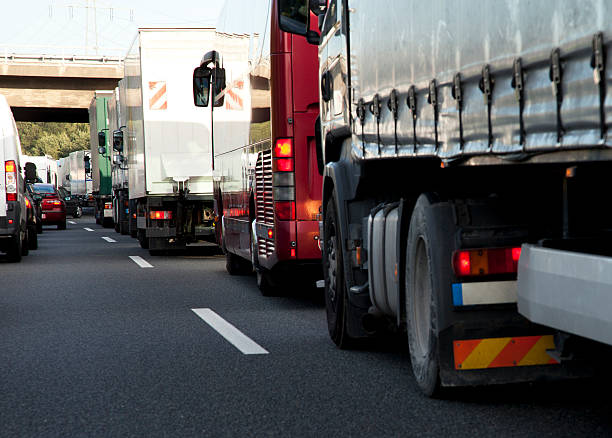The European Commission proposed tighter CO2 rules for trucks or heavy vehicles on Tuesday, mandating that all new trucks reduce emissions by 90% by 2040 and all new city buses emit zero emissions starting in 2030.
The objective is to minimize the demand for imported fossil fuels while also bringing the transportation sector into line with the European Union’s target of achieving zero net greenhouse gas emissions by 2050.
The 27-nation group established a 2035 goal for CO2-free new cars just last year.
Is cutting emissions till 2040 too soon for some EU countries?
On Tuesday, the Commission suggested that manufacturers would have to cut the typical CO2 emissions of the new trucks they sell by 90% from 2019 levels by 2040.
They would also have to reduce their CO2 emissions by 45% by 2030 and 65% by 2035.
Even though several EU nations – who must negotiate the final law with the European Parliament – have argued zero emissions by 2040 is too soon for manufacturers, the 90% aim falls short of the zero emissions goal that countries including the Netherlands intended.
Why not 100% trucks with net zero emissions?
EU climate policy chief Frans Timmermans claimed that the bloc had not recommended a 100% reduction in emissions because it is unclear when zero-emission technologies will be available for all trucks, especially those that must navigate difficult terrain like mountains.
EU will eventually need to change to a 100% target, Timmermans said.
The proposal angered activists who claimed that new CO2-emitting vehicles registered in 2040 would still be on the road in 2050, defeating the bloc’s goal of achieving net zero emissions.
According to Fedor Unterlohner, freight manager at the advocacy group Transport & Environment, polluting trucks will continue to be marketed for years longer than necessary, making the EU’s net zero aim impractical.
Trucks in the EU were 12 years old on average in 2020
The average age of trucks in the European Union (EU) can vary depending on the country, the type of truck, and other factors. However, according to a report by the European Automobile Manufacturers’ Association (ACEA) based on data from 2020, the average age of heavy-duty trucks in the EU was around 12 years.
According to the ACEA’s 2020 EU commercial vehicle market report, the average age of heavy-duty trucks ranged from around 8 years in countries like Austria, Belgium, Denmark, and the Netherlands to over 15 years in Bulgaria, Greece, Latvia, and Lithuania.
The Swedish truck manufacturer AB Volvo began producing big electric trucks in series last year and plans to have half of its deliveries of trucks in the world run on electricity by 2030.
Hydrogen fuel cells are another way to decarbonize trucks, albeit their accessibility is currently constrained.
How to decarbonize trucks?
Decarbonizing trucks are an important part of reducing greenhouse gas emissions and addressing climate change. Here are some ways to decarbonize trucks:
- Electrification: One of the most effective ways to decarbonize trucks is to electrify them. Electric trucks can run on renewable energy sources like wind and solar power, which can significantly reduce emissions. However, the current limitations of battery technology and the high cost of electric trucks are barriers to widespread adoption.
- Hydrogen fuel cells: Another option is to power trucks with hydrogen fuel cells. Fuel cell trucks emit only water vapor. Also, refueling is quick, making them suitable for long-haul transportation. Still, the infrastructure for producing and distributing hydrogen at the moment is limited and expensive.
- Biofuels: Using biofuels like biodiesel or ethanol in trucks can reduce emissions by up to 60%. However, the production of biofuels can have negative environmental impacts.
- Aerodynamics: Making trucks more aerodynamic can reduce fuel consumption and emissions. Manufacturers can do this by reducing drag and improving airflow around the truck. Some examples of aerodynamic improvements include adding side skirts, boat tails, and trailer tails.
- Efficient engines: Improving the fuel efficiency of truck engines can reduce emissions. Manufacturers can do this through measures like optimizing engine design, improving transmission, and reducing weight.
- Efficient driving: Encouraging more fuel-efficient driving practices like smoother acceleration and deceleration, avoiding idling, and maintaining consistent speeds can also reduce emissions.
These are just a few ways to decarbonize trucks, and the most effective strategy will depend on the specific circumstances of each trucking operation. A combination of these approaches may be necessary to achieve significant emissions reductions.

